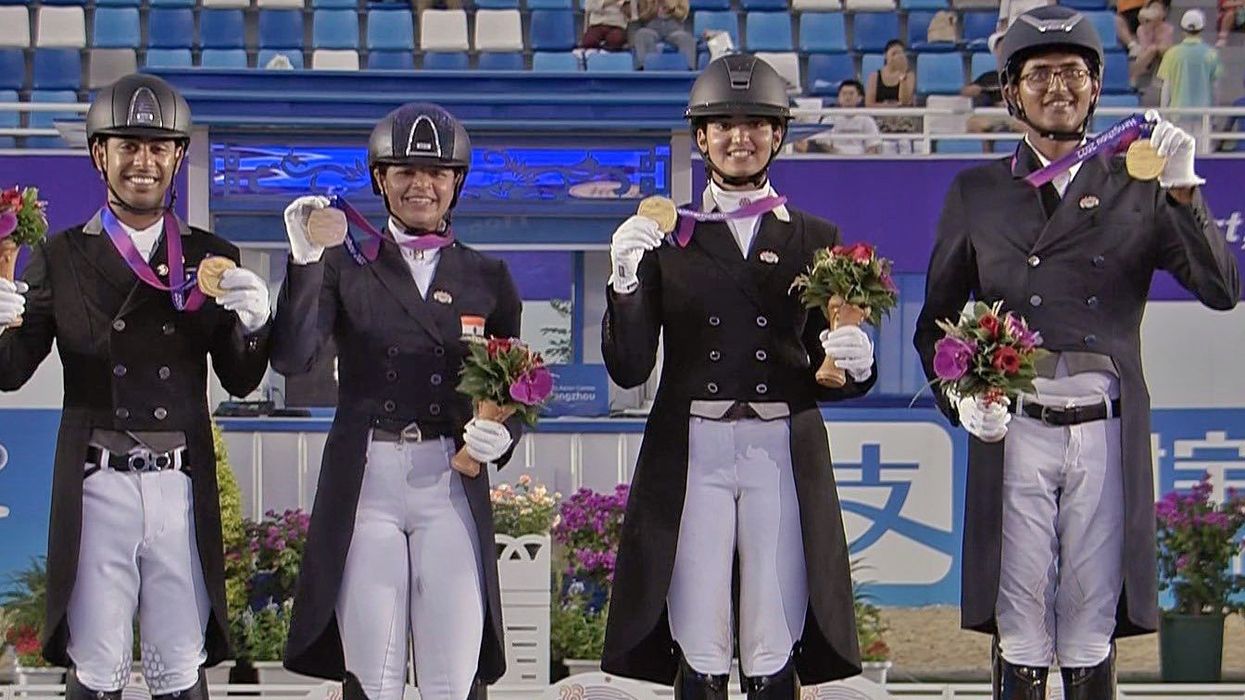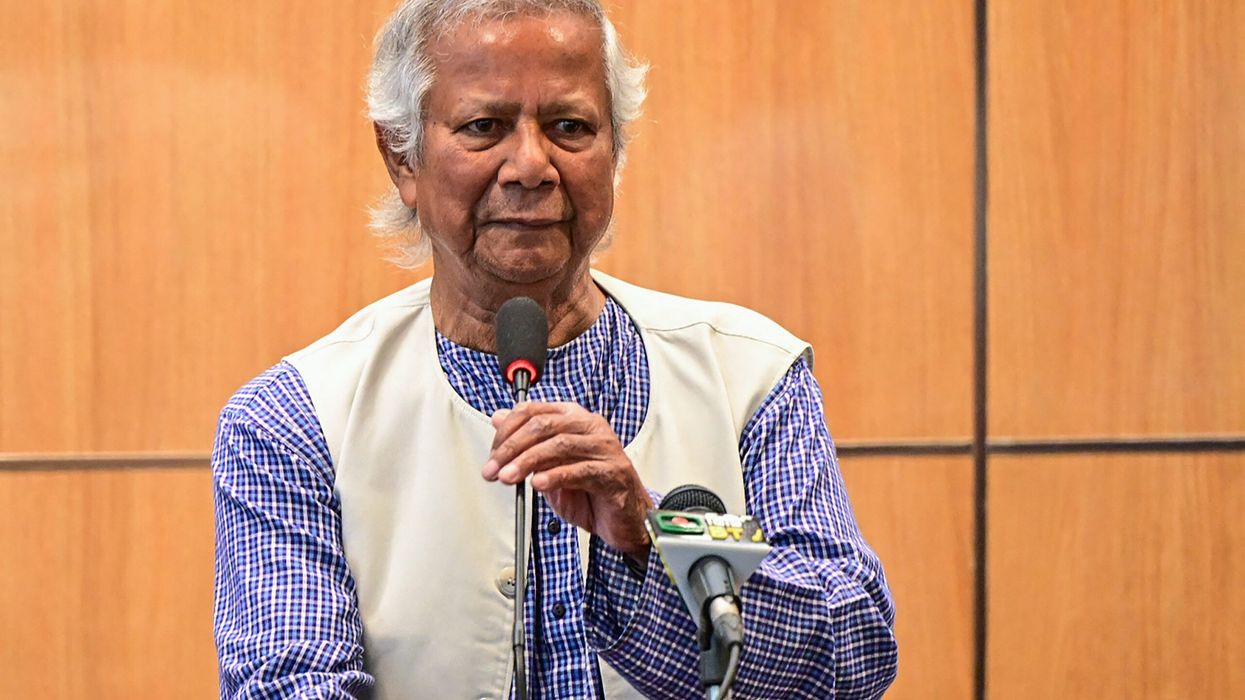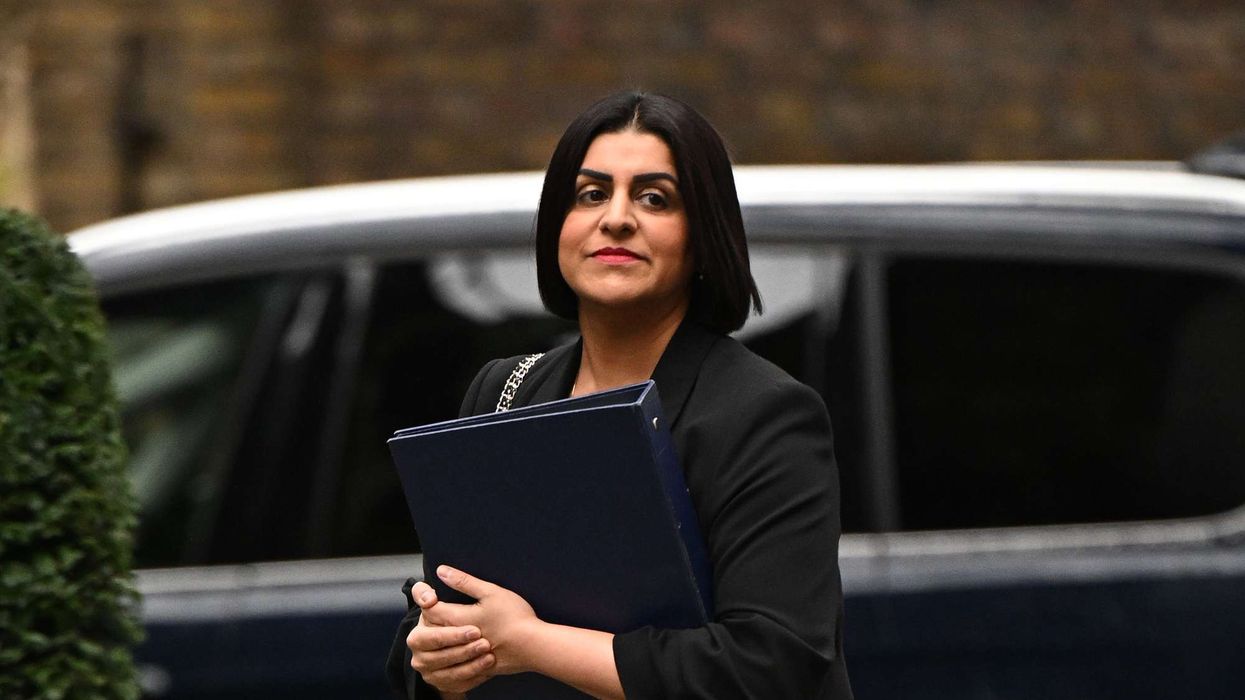In a historic achievement, India's dressage team clinched its first-ever Asian Games gold medal, marking only the second victory in this discipline's history. The quartet of Sudipti Hajela, Divyakriti Singh, Vipul Hriday Chheda, and Anush Agarwalla successfully lived up to the high expectations on Tuesday (26) in Hangzhou.
The Indian quartet was performing well in the selection trials as their scores either matched or were better than the Asian Games medal winners from the previous editions. It was more about the colour of medal they would win and they grabbed the top place on the podium by aggregating 209.205 percentage points, leaving behind China (204.882 %) and Hong Kong (204.852%).
The last time the sport of equestrian contributed to India's Asian Games tally was in 1986 when the country won a dressage bronze. In the 1982 edition in New Delhi, the Indian team had grabbed three gold medals in Eventing and Tent Pegging competitions.
Raghubir Singh had won a gold in individual Eventing in 1982 and then added another yellow metal in Team Eventing alongside Ghulam Mohammed Khan, Bishal Singh and Milkha Singh.
Rupinder Singh Brar won the third gold medal in individual tent pegging.
In dressage, the horse and rider are judged on how they perform a series of movements. Each movement is marked out of 10 (from 0 to 10). Each rider gets an overall score and from there, a percentage is worked out. The rider with the highest percentage is the winner of his class.
Top three scorers in a team are counted to determine the winner. The Indian team is an interesting mixture of riders.
The 21-year-old Sudipti, the youngest of the quartet, was born in Indore, in India’s Madya Pradesh and currently trains at Pamfou in France. She began horse riding at the age of six as a hobby but later took it seriously as a sport on the insistence of her father. The name of her horse is Chinski.
The 23-year-old Divyakriti, hailing from Jaipur, in the Indian state of Rajasthan took to horse riding when she was in the seventh grade at the famous Mayo College Girls School in Ajmer. She was the equestrian captain of her school. She did her graduation in Delhi's Jesus and Mary College. In 2020, she moved to Europe for training as equestrian infrastructure is not the best in India. She was training at Hagen ATW in Germany before the Asian Games. She rides Adrenalin Firfod.
Hailing from Mumbai, Maharashtra in the western region of India, the 25-year-old Vipul, a business management degree holder from University of London, also began horse riding at a young age. Since 2013, he began training with top foreign players in Europe. Interestingly, he began work to start a top class riding facility and first breeding programme for dressage horses in the country. He rides Chemxpro Emerald.
The 23-year-old Anush hails from Kolkata in the Indian state of West Bengal and he is also currently based in Borchen in Germany. He developed his passion for horse riding after his parents took him to a club in Kolkata.
He soon began having horse riding lessons at the age of eight. After having difficulties in finding a coach, he left India in 2017 and moved to Germany.
He became the first male dressage rider from India to compete at the world championships at the 2022 edition in Herning, Denmark. His horse's name is Etro.
(PTI)












